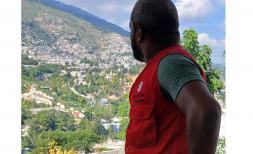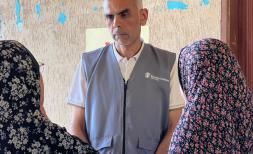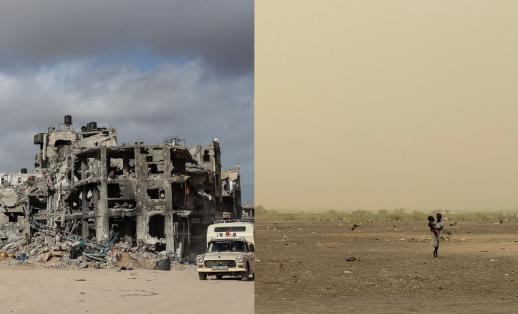16 years of saving children’s lives: A day-in-the life of one incredible health worker

Words and images by Sacha Myers
The camp where I meet Muna is jumble of structures. Some homes are built with corrugated iron and brick while others seemed scraped together hastily with salvaged items such as old curtains, flattened powered milk containers and large pieces of wood.
Muna is a Family Health Worker with Save the Children and tells me that people first started arriving in the camp as long ago as 2003, which is when her family arrived, forced from their home by conflict and severe drought.
Since then, people have arrived in waves every year, driven by yet another crisis. The most recent influx is due to the severe water shortages and drought currently gripping many parts of Somalia.
“Children living in the camp are at risk because the living conditions are so bad and sometimes families cannot afford clean drinking water. Sometimes they cannot afford to send all of their children to school,” Muna says.
Seeing how children were suffering in the camp, Muna decided to volunteer as a Family Health Worker. Sixteen years later, she’s still goes door-to-door each day visiting families and providing basic healthcare for children and pregnant and breastfeeding women in her community.
We set off together on her daily rounds and walk through the wide, dusty streets, Muna waving to everyone we pass.

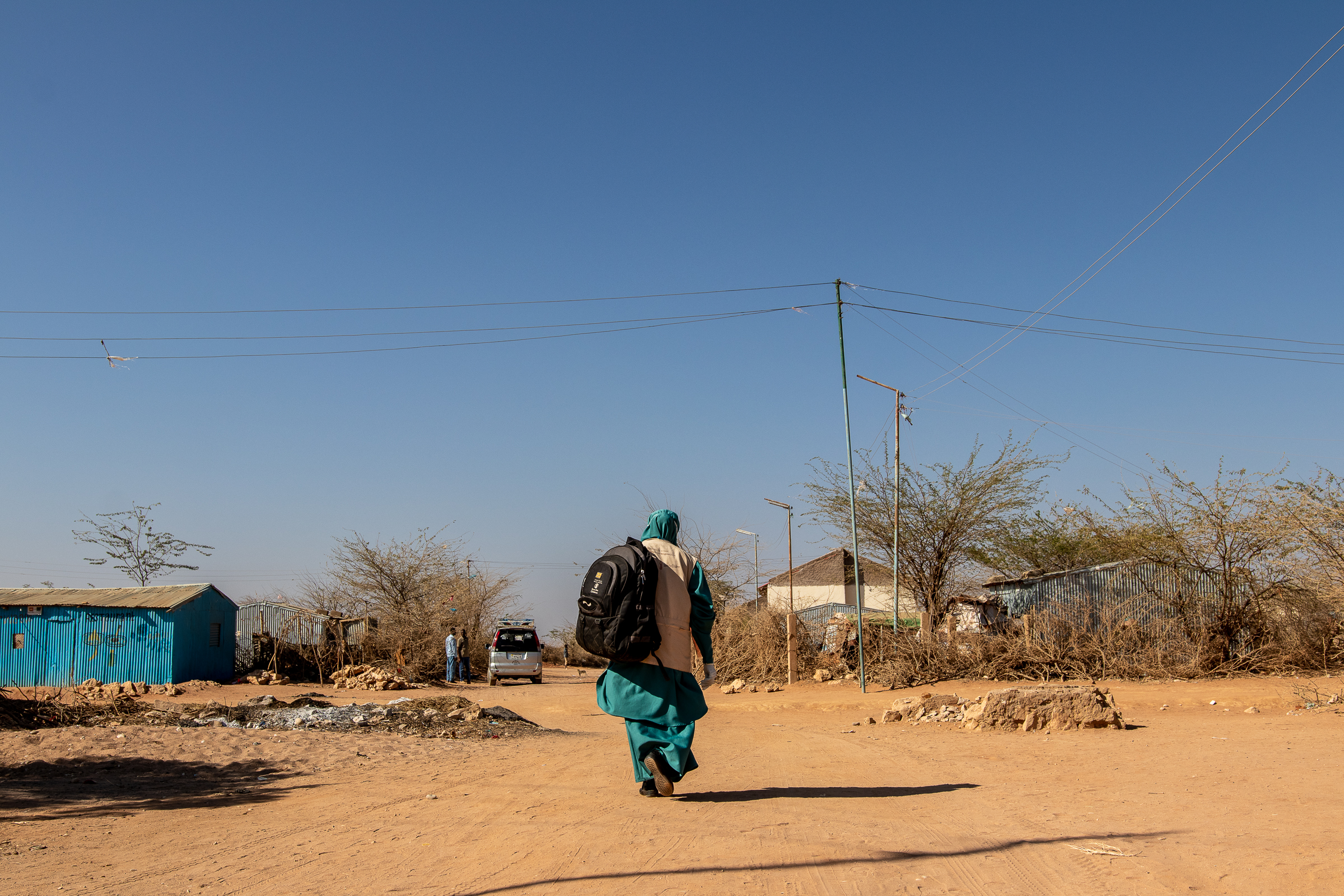
First on Muna’s list of families to visit is Shuun and her three-year-old granddaughter Hamda, who was treated for malnutrition at a Save the Children clinic.
“I’ve been here for about two years now,” Shuun tells me. “We moved because of the drought and because all our livestock died. The land we’re living on now was given to us. I built the houses from materials and curtains that no one needed.
“My granddaughter Hamda got ill a little while ago. She had flu-like symptoms and was a little thin. Muna come here and identified her illness and gave her some medicine and then came back to check on her. She then referred Hamda to the clinic for treatment for malnutrition.
“Muna really cares about the community and helps us a lot. Sometimes we don’t even know our children are malnourished and she helps us. She treats illnesses in our homes so we don’t have to travel to the clinic."



Muna’s next stop is at the home of two-year-old Suhuur who lives with her aunty Fosiya and her cousin Amiira.
Suhuur was born with a disability and has difficulties walking and talking. Her mother recently moved away leaving Suhuur with her aunty.
Fosiya used to support her extended family by buying and selling milk at the market. But since the drought, animals are not producing milk and it has greatly impacted on their income. Sometimes they can only afford one meal a day.
“When I visited this family recently, I noticed Suhuur was breathing rapidly. I used a timer to measure her breaths and knew that she was having trouble breathing. I diagnosed her with pneumonia and gave her the treatment,” Muna explains to me shortly after we arrive.
Muna also referred Suhuur to Save the Children’s clinic for treatment for malnutrition as she’d lost weight while she’d been sick.
“Muna comes by on almost a daily basis and keeps track of how the girls are going,” Fosiya says. “Sometimes I don’t even know the kids are ill but Muna helps keep an eye on them, diagnose any illnesses and them and give them medicine.”Four-year-old Adan greets us as with a big smile as we approach his gate, which is made from old bed springs.
Adan suffered from polio when he was younger and has severe acute malnutrition but is starting to improve. He lives with his mother Safiya and baby sister Edo.
“I’ve been here for about a year and a half. I was living in the rural areas and we didn’t have any more livestock because they died in the previous drought, so we decided to move here,” Safiya says. “The children used to consume milk from our livestock but then because of the drought we couldn’t get the milk from the livestock. I feel like that’s when they started to get malnourished.
“They were entered into a [Save the Children malnutrition] program where we got USD $70 to support with buying food and they gave the children peanut paste (therapeutic food). I felt less worried when they started to get better. I get a lot of support from Muna because I wouldn’t have known what to do otherwise.”

We finish the day by visiting new camp arrivals 15-year-old Ayan* and her mother Hinda.
“I moved here because of the drought and I’ve been here for about 10 days,” Ayan says. “Most of our livestock died due to lack of rain and pasture for them to eat. I came with my mother, father and my husband. I was happy where I lived and I was sad to leave.”Ayan is seven months pregnant and Muna provided her with information on breastfeeding and how to protect herself from COVID-19. Ayan has also visited Save the Children’s clinic to receive a prenatal check-up.



“I didn’t have access to any healthcare before coming here, but now I go to the clinic. I was vaccinated and they told me I had an infection, and they gave me medicine for that and also medicine for acid reflux,” Ayan says.
“Today I learnt how to feed the child and that I should breastfeed exclusively for the first six months and to wash my hands before feeding. This is the first time I’ve received this information. I’m happy to know how to take care of my baby.”
We arrive back at Muna’s home and she goes through the process of removing her gloves and mask and cleaning her equipment, ready for the next day.
Throughout the day, as we’d walked around the camp, women had rushed over to us, warmly greeting Muna and then turning to me to say how important Muna was to their lives. How, on countless occasions, she’d provided life-saving healthcare to their children. It was a very humbling experience.
As I said goodbye to Muna, I asked myself where the world would be without incredible health workers like Muna who work tirelessly to save children’s lives.
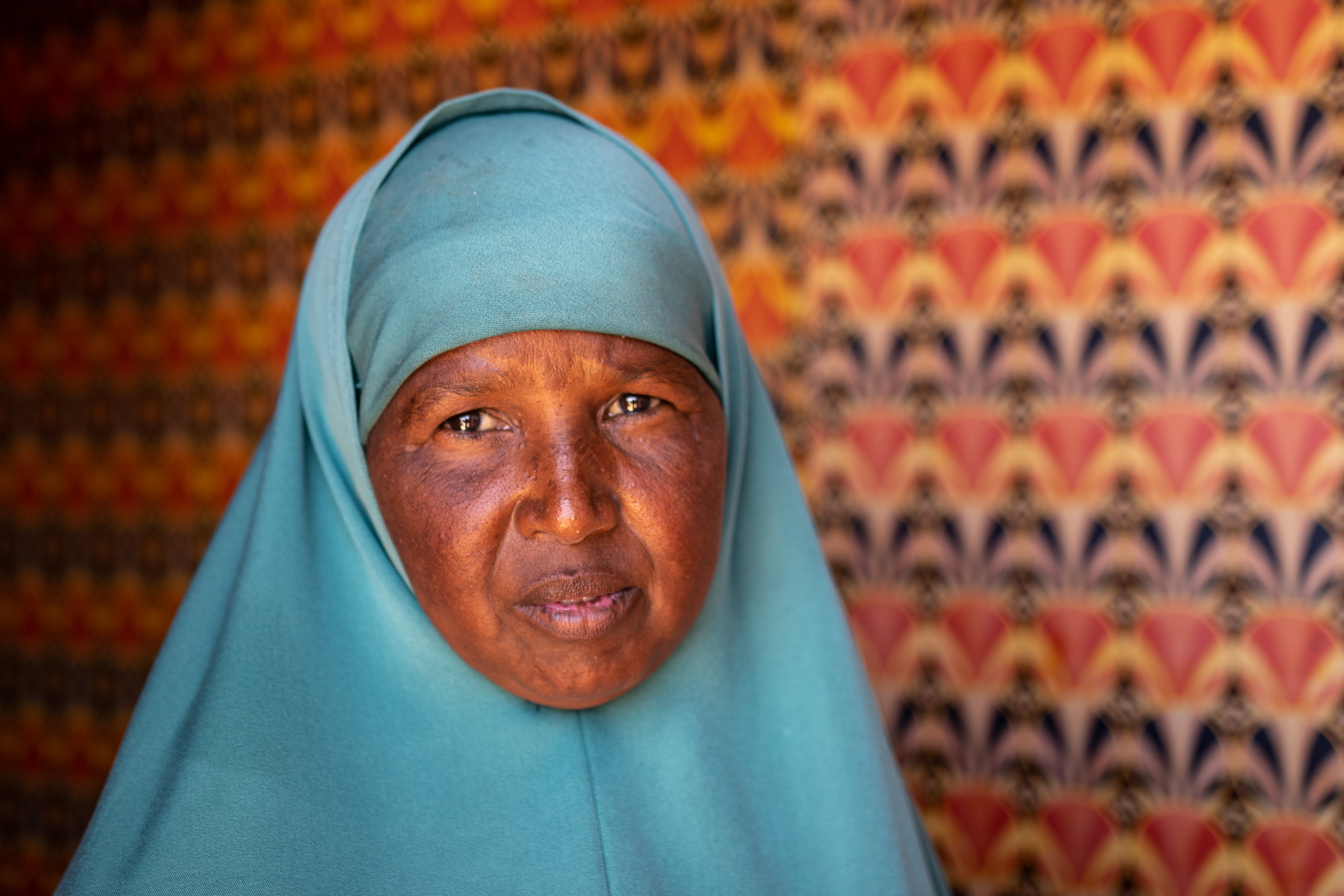
Save the Children continues to prioritise the needs of the most vulnerable and marginalised children caught up in Somalia’s climate crisis.
The organisation is ramping up its humanitarian response to provide water for drought-stricken communities, therapeutic food for malnourished children, emergency healthcare for pastoralist and hard-to-reach communities, cash and voucher assistance to families facing economic stress to reduce their need to leave their homes and student food and water programmes to support schools to stay open.
Save the Children is calling on donors to act quickly and provide immediate emergency funding to sustain and significantly scale up the response to help prevent thousands of children dying from hunger, missing out on school and being displaced from their homes.
*Name changed to protect identity
